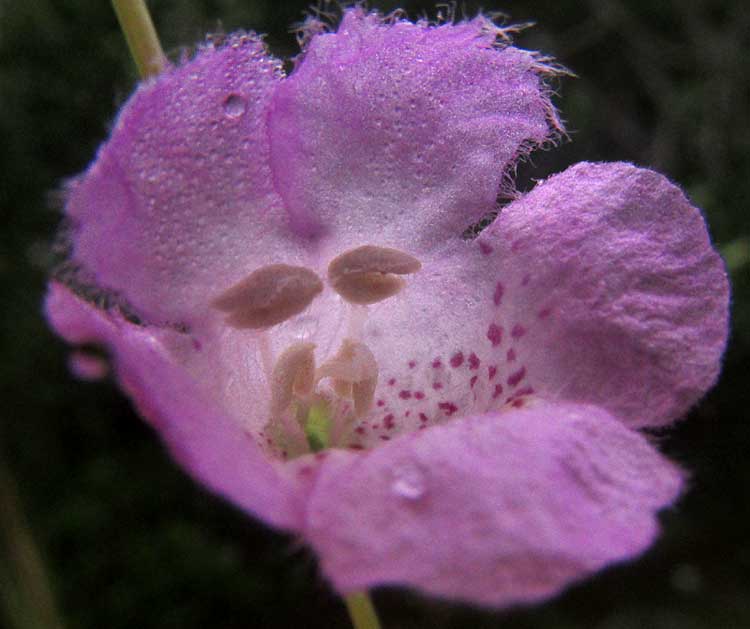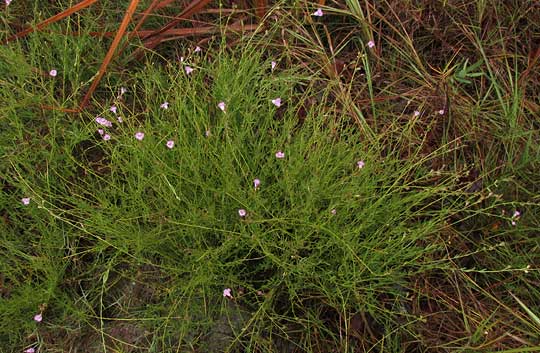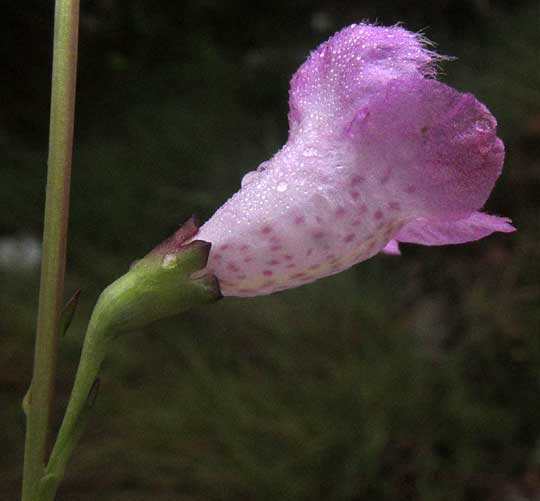Excerpts from Jim Conrad's
Naturalist Newsletter

from the June 7, 2015 Newsletter issued from Río Lagartos, on the Yucatan Peninsula's northern coast (~N21.60°, ~W88.16°), Yucatán state, MÉXICO
SALTMARSH AGALINIS
Early on the morning after our first good rain of the oncoming rainy season I was biking through the mangroves looking for rain-awakened critters. However, something that caught my eye that morning wasn't a mud-covered animal, but rather a wildflower at a salt marsh's edge. Its numerous, small, pale, diffusely arranged blossoms glowed brightly in the morning's dim light, as you can see below:

Even at that distance the plant reminded me of that group of wildflowers that in the north we call gerardias, agalinises or false foxgloves. You might remember the very similar Plateau Agalinis that was so common but narrowly endemic to just a few counties in the Texas Hill Country, shown at www.backyardnature.net/n/h/agalinis.htm.
Up close, the salt-marsh plant's funnel-shaped, rosy flowers with speckled throats also were similar to those of Texas's Plateau Agalinises, as seen below:

A peep into the throat of the bilaterally symmetrical corolla found four stamens of two lengths inserted on the corolla tube, just as with the Plateau Agalinis, shown at the top of this page..
In fact, this is AGALINIS SPICIFLORA, which specializes in salt marshes, so we'll call it the Saltmarsh Agalinis. It's endemic to the Yucatan Peninsula, including Belize, and islands of the Caribbean.
I say "we'll call" because there is no good English name for the species, and other names are all a muddle. Some experts regard Agalinis spiciflora as a variety of Agalinis maritima, which sometimes is called Saltmarsh False Foxglove or Seaside Gerardia, and much of the older literature calls our plant Gerardia cereifera.
In the old days, Agalinis/Gerardia species were regarded as members of the Snapdragon or Figwort Family, the Scrophulariaceae, and to me they look like that's where they belong. However, in recent years genetic studies have indicated that Agalinis species are more closely related to members of the Broomrape Family, the Orobanchaceae, famous for its many species that are completely or partly parasitic on the roots of other plants. Agalinis species are partly parasitic and that partly explains why they were shifted to the Broomrape Family.